Online Discussions
1 Purpose
Complete the cup tapping activity applying Motor Learning Principles (MLPs) AND the Fitts & Posner (1967 as cited in (Magill & Anderson, 2017)) three stages of learning to enhance your understanding of motor learning concepts.
2 The Task
Complete this sequential taping activity using a cup. The activity consists of a series of hand claps and cup taps, which you will perform in a specific order. The goal is to practice the sequence until you can perform it smoothly, fast, and accurately.
3 Video Demonstration
4 Sequence
Below is a step-by-step visual guide showing the cup tapping sequence. As you practice, consider how each step relates to the skill classification you’ll need to complete in your initial post:
| Image | Step Description |
|---|---|
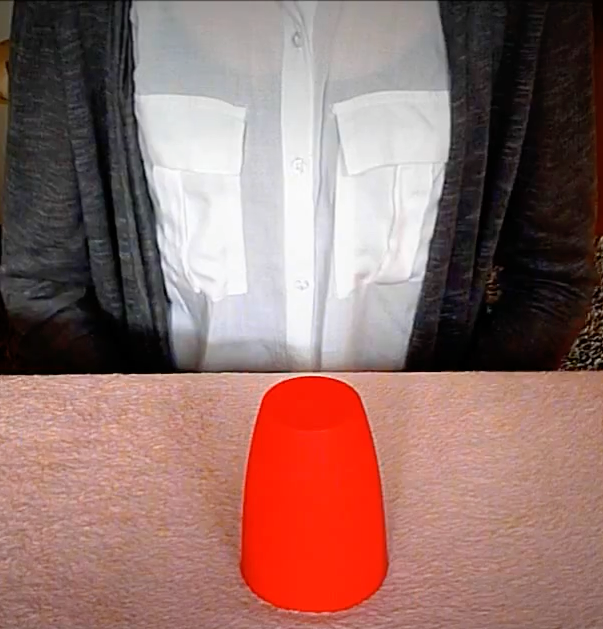 |
Step 1: Starting position - Hands flat on lap |
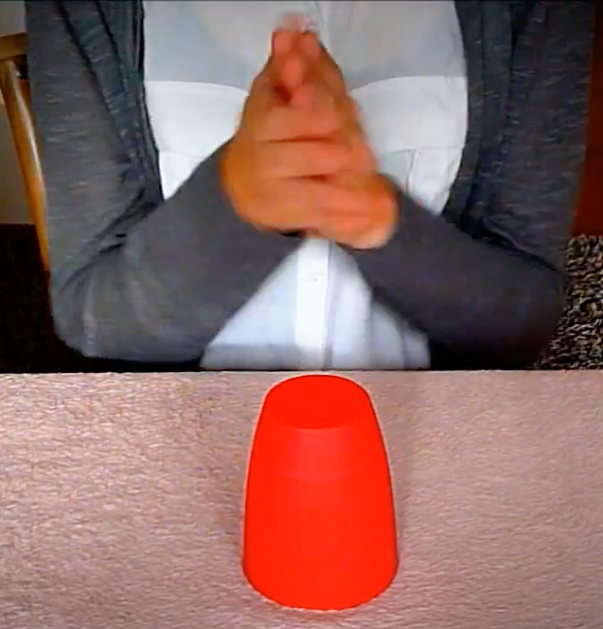 |
Step 2: Clap hands twice |
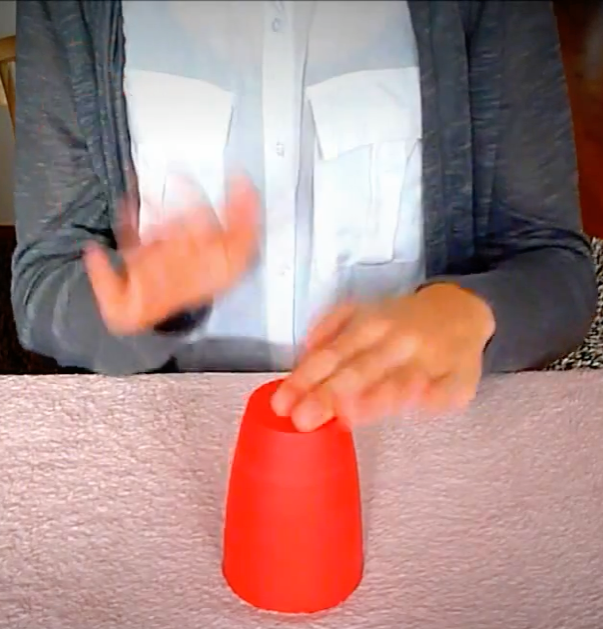 |
Step 3: Tap the cup three times (alternating quickly: Right-Left-Right or Left-Right-Left) |
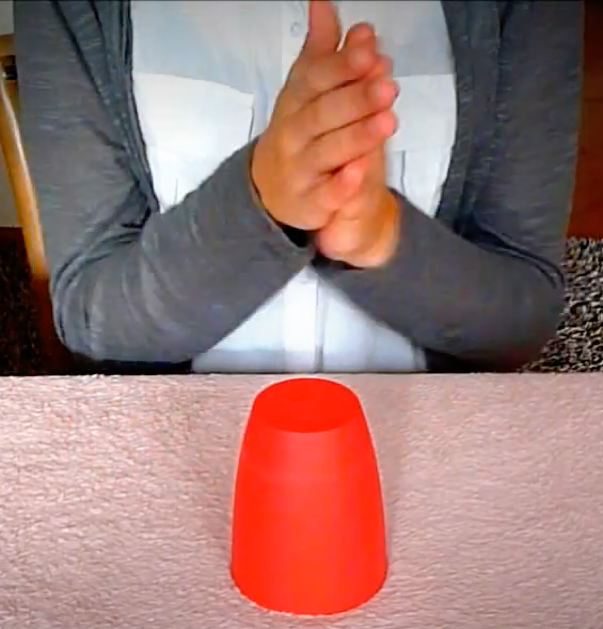 |
Step 4: Clap hands once |
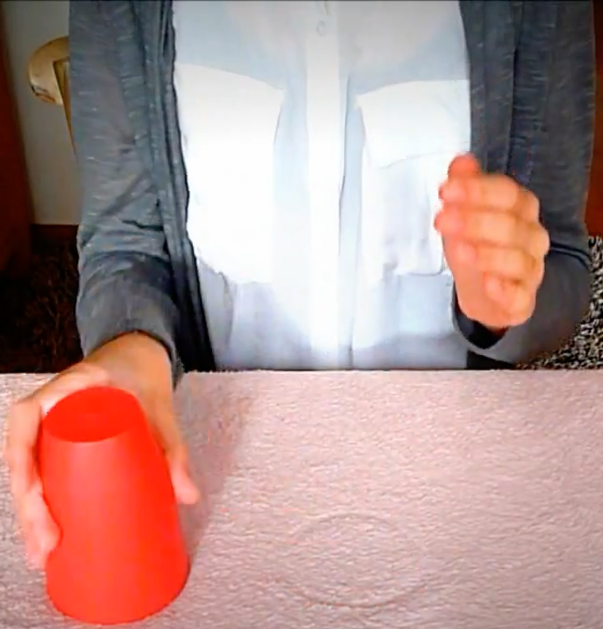 |
Step 5: Pick up the cup with the right hand, moving it to the right side of the body |
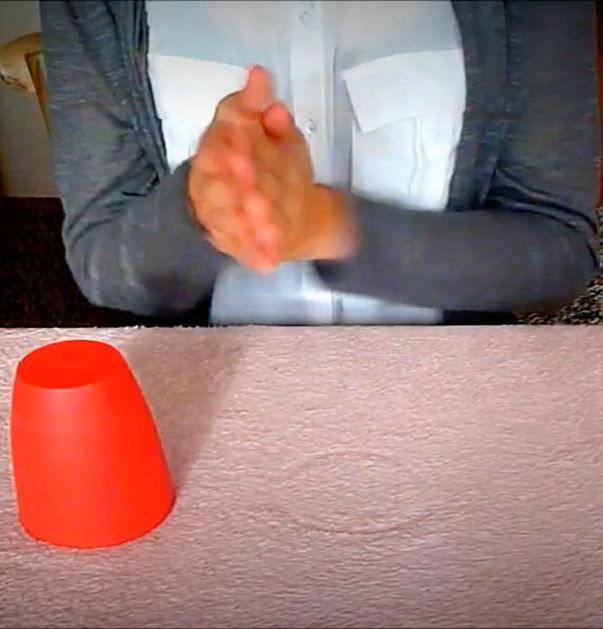 |
Step 6: Clap hands once |
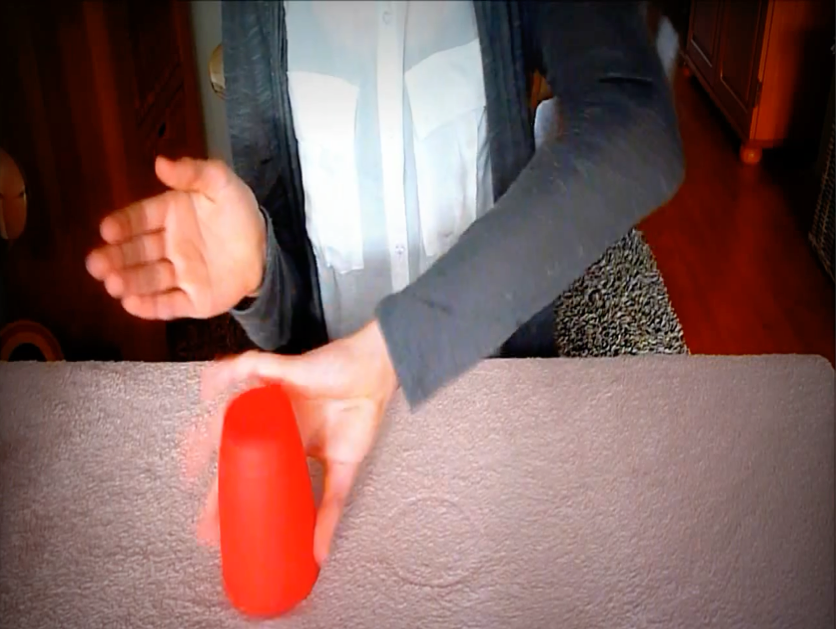 |
Step 7: Pick up the cup with the left hand (palm facing forward), raise it up and tap it with right hand |
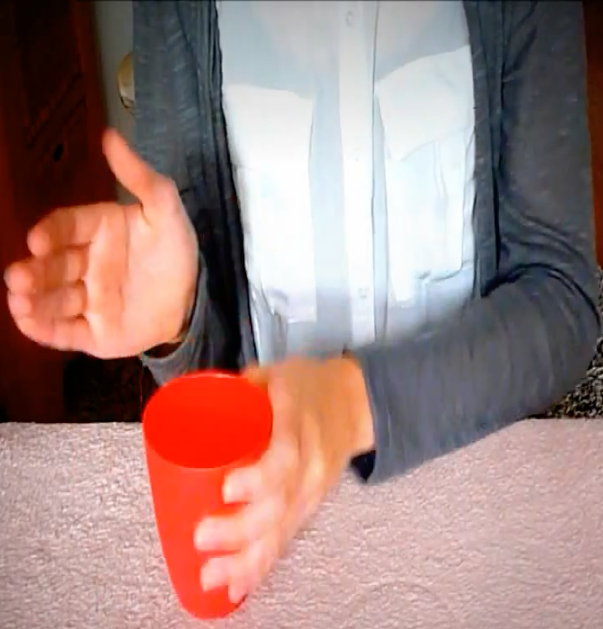 |
Step 8: Place the cup back down on the table (bottom down) with the left hand and quickly raise it |
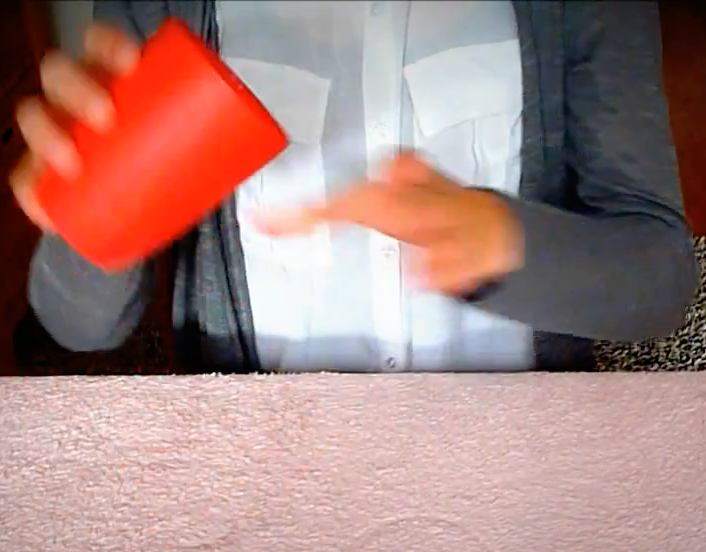 |
Step 9: Switch the cup to the right hand and place it back down on the table (face down) while the left hand is palm down on the table |
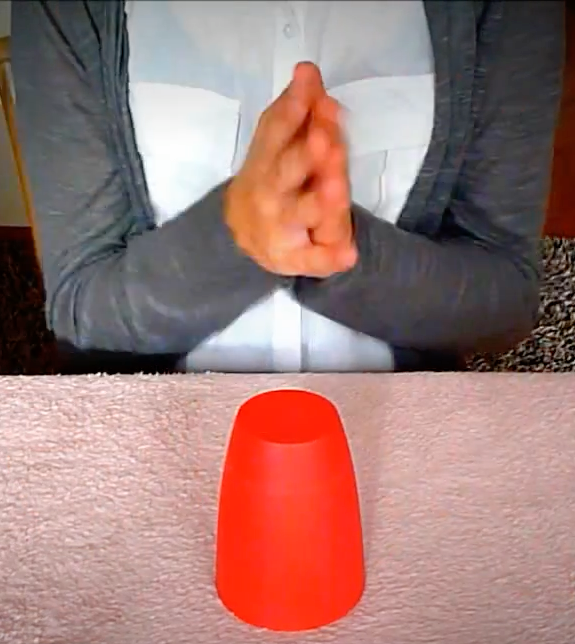 |
Step 10: Clap hands twice - Ready to repeat the sequence |
5 Discussion #1: Skill Classification & MLP Application
5.1 Purpose
Practice the cup tapping sequence and apply ONE Motor Learning Principle while classifying the skill according to motor learning taxonomy.
5.2 Requirements
5.2.1 Practice & Preparation
- Practice the cup tapping activity for at least 10 minutes, focusing on the sequence and your hand movements.
- Read the blog post (Furtado, 2025) on Motor Learning Principles (MLPs) to select one principle to apply in your practice.
- Practice the cup tapping activity again, this time applying the selected MLP.
- Reflect on your practice, focusing on how the MLP influenced your performance and any challenges you faced.
5.2.2 Initial Post Write-up (70 points)
Due by the end of Week 3. Create an initial post (250 words minimum) with the following structure:
5.2.2.1 Skill Classification
Classify the cup tapping activity based on:
- Primary musculature: (e.g., fine motor skills)
- Movement specificity: (e.g., discrete skill)
- Environmental stability: (e.g., closed skill)
Provide clear justification for each classification element.
5.2.2.2 Motor Learning Principle Applied
- Identify and paraphrase ONE motor learning principle (from the blog post (Furtado, 2025) and/or (Magill & Anderson, 2017))
- Explain how you specifically implemented this principle during practice
- Describe the impact this principle had on your performance
5.2.2.3 Challenges & Strategies
- Identify specific challenges you encountered during practice
- Propose practical strategies for overcoming these challenges
- Explain how you plan to implement these strategies in future practice sessions
Note: Format your post with clear headings and subheadings as shown above for readability.
5.2.3 Peer Responses (30 points)
Due by the end of Week 4.
- Respond to
threedifferent classmates’ posts - Provide specific suggestions to address their challenges
- Reference course materials or personal experience
- Minimum 150 words per response
5.3 Discussion #1: Grading Rubrics
5.3.1 Initial Posts Rubric (70 points)
| Category | Excellent (pts) | Satisfactory (pts) | Needs Improvement (pts) |
|---|---|---|---|
| Skill Classification | (18-20) Accurately and thoroughly classifies the activity based on all three criteria (musculature, specificity, environment) with clear justifications. | (13-17) Adequately classifies the activity, covering most criteria with some justification, but may lack depth or clarity in one area. | (0-12) Inaccurately classifies the activity, misses one or more criteria, or provides minimal/no justification. |
| MLP Application & Discussion | (18-20) Clearly describes the chosen MLP (paraphrased) and provides specific, insightful examples of its application. Discusses impact on performance. | (13-17) Describes the MLP with some clarity and provides general examples of application. Basic discussion of impact. | (0-12) Vague or incorrect MLP description. Lacks specific examples of application or fails to discuss its impact meaningfully. |
| Challenges & Strategies | (12-15) Articulates specific challenges faced and proposes thoughtful, practical, and well-explained strategies for overcoming them. | (8-11) Identifies some challenges and proposes general strategies, but may lack detail or practicality. | (0-7) Fails to clearly identify challenges or proposes vague, impractical, or no strategies for improvement. |
| Format & Requirements | (12-15) Meets 250-word minimum. Post is well-organized with clear headings and subheadings, enhancing readability. All prompt components addressed. | (8-11) Approaches 250-word minimum. Generally organized, but headings/subheadings may be missing or not effectively used. Most prompt components addressed. | (0-7) Significantly under 250-word minimum. Poorly organized, lacking clear structure or headings/subheadings. Fails to address key components of the prompt. |
5.3.2 Peer Responses Rubric (30 points)
| Category | Excellent (pts) | Satisfactory (pts) | Needs Improvement (pts) |
|---|---|---|---|
| Solution Quality | (9-10) Specific, actionable solutions | (6-8) General but relevant advice | (0-5) Vague or unhelpful responses |
| Evidence & Support | (9-10) Well-supported with course materials | (6-8) Some support for suggestions | (0-5) Minimal support provided |
| Format Requirements | (9-10) Meets 150-word minimum with clear organization | (6-8) Slightly under word count or needs better organization | (0-5) Significantly under word count or poorly organized |
6 Discussion #2: Continued Practice & MLP Application
6.1 Purpose
Building on your initial practice and understanding from Discussion #1, continue practicing the cup tapping sequence while applying a different Motor Learning Principle (MLP) than the one used in Discussion #1.
6.2 Requirements
6.2.1 Practice Session
- Practice the cup tapping activity for at least 15 minutes or longer as needed
- Apply a different MLP from the one used in Discussion #1 (refer to (Furtado, 2025) and/or (Magill & Anderson, 2017))
- Focus on improvement and refinement of the sequence
6.2.2 Initial Post Write-up (70 points)
Due by the end of Week 8.
Create an initial post (200 words minimum) with the following structure:
6.2.2.1 Motor Learning Principle Applied
- Identify and paraphrase ONE different motor learning principle than Discussion #1
- Explain how you specifically implemented this principle during practice
- Compare this principle’s effectiveness to the one used in Discussion #1
6.2.2.2 Progress & Performance Changes
- Describe specific improvements in your performance since Discussion #1
- Identify areas where you still need improvement
- Discuss how the new MLP influenced your learning process
6.2.2.3 Challenges & Refined Strategies
- Identify new or persistent challenges encountered during practice
- Propose refined or new strategies for overcoming these challenges
- Explain how your approach to practice has evolved
Note: Format your post with clear headings and subheadings as shown above for readability.
6.2.3 Peer Responses (30 points)
Due by the end of Week 9.
- Respond to
threedifferent classmates’ posts - Compare and contrast MLP applications between Discussion #1 and #2
- Provide specific suggestions for continued improvement
- Minimum 100 words per response
6.3 Discussion #2: Grading Rubrics
6.3.1 Initial Posts Rubric (70 points)
| Category | Excellent (pts) | Satisfactory (pts) | Needs Improvement (pts) |
|---|---|---|---|
| MLP Application & Comparison | (25-28) Clearly describes and applies a different MLP with specific examples. Provides insightful comparison between the two MLPs used, analyzing their relative effectiveness with depth and understanding. | (18-24) Describes and applies a different MLP with adequate specificity. Makes basic comparisons between the two MLPs with some understanding of their effectiveness. | (0-17) Vague or incorrect MLP description. Minimal application examples or fails to meaningfully compare the two MLPs. Limited understanding demonstrated. |
| Progress & Performance Analysis | (21-24) Provides detailed, specific analysis of performance improvements since Discussion #1. Clearly identifies continuing areas for development and explains how the new MLP influenced learning. | (15-20) Describes general performance changes with some specificity. Identifies most areas needing improvement with basic explanation of MLP influence. | (0-14) Vague or minimal description of performance changes. Fails to identify specific improvements or explain MLP influence on learning. |
| Challenges & Strategy Evolution | (16-18) Articulates specific new or persistent challenges. Proposes refined, practical strategies with clear rationale. Demonstrates evolution in problem-solving approach from Discussion #1. | (11-15) Identifies some challenges and proposes general strategies. Shows some development in approach but may lack detail or clear evolution from previous discussion. | (0-10) Fails to clearly identify challenges or proposes vague strategies. Little evidence of evolved thinking or strategy refinement. |
6.3.2 Peer Responses Rubric (30 points)
| Category | Excellent (pts) | Satisfactory (pts) | Needs Improvement (pts) |
|---|---|---|---|
| MLP Comparison & Analysis | (11-12) Provides thoughtful comparison of different MLPs used by classmates. Makes meaningful connections between MLP applications and learning outcomes. | (8-10) Makes basic comparisons of MLPs with some insight. Shows understanding of different approaches but may lack depth. | (0-7) Minimal or superficial comparison of MLPs. Fails to meaningfully connect MLP applications to learning outcomes. |
| Improvement Suggestions | (11-12) Offers specific, actionable suggestions for continued skill development. Demonstrates understanding of motor learning progression and practical application. | (8-10) Provides general but relevant suggestions with some practical value. Shows basic understanding of skill development. | (0-7) Vague or unhelpful suggestions. Minimal understanding of motor learning concepts or skill development. |
| Format & Engagement | (5-6) Meets 100-word minimum with clear organization and meaningful engagement with classmate’s learning experience. | (3-4) Approaches word count with adequate organization and engagement. | (0-2) Significantly under word count or superficial engagement with classmate’s post. |
7 Discussion #3: Fitts & Posner Stages Application & Video Demonstration
7.1 Purpose
Apply the Fitts & Posner (1967) three stages of learning to analyze your progression through the cup tapping sequence over the course of all three discussions, and demonstrate your skill mastery through a video submission.
7.2 Requirements
7.2.1 Final Practice Session
- Practice the cup tapping activity for at least 20 minutes or longer as needed
- Focus on achieving your best possible performance (aiming for under 7 seconds)
- Apply insights gained from previous discussions
- Record your performance for submission
7.2.2 Video Submission (20 points)
Due by the end of Week 12.
Record and submit a video that:
- Shows you performing the cup tapping sequence (single trial)
- Captures your entire body and the cup from a clear angle
- Demonstrates your best performance (under 7 seconds is considered mastery)
- The video should not be edited or cut; it should be a single, continuous performance
- Has clear lighting
Video Submission
Record and upload your video to YouTube, then set it to either public or unlisted, not private. Then copy the URL address of the video and submit it via Canvas.
The only accepted method to submit the video:
Submitting videos within Canvas can be tricky. To ensure I can watch and grade your video, upload it to YouTube and submit its URL here. The video must be set to ‘Unlisted’ or ‘Public’ (not ‘Private’). Only people with the link can find and watch your video if set to unlisted.
See tutorial below:
7.2.3 Initial Post Write-up (50 points)
Due by the end of Week 12.
Create an initial post (250 words minimum) with the following structure:
7.2.3.1 Fitts & Posner Stages Analysis
- Identify which stage(s) of learning you experienced during each discussion period
- Provide specific evidence from your practice sessions to support your stage identification
- Describe characteristics you observed that align with each stage
7.2.3.2 Learning Progression Reflection
- Compare your performance from Discussion #1 to Discussion #3
- Identify the most significant changes in your skill execution
- Discuss how your understanding of the task evolved over time
- Reference your video submission and include your completion time
7.2.3.3 Integration of MLPs and Stages
- Explain how the different MLPs you applied in Discussions #1 and #2 may have facilitated progression through the stages
- Discuss which MLP was most effective for your learning and why
- Propose how you might apply these insights to learning other motor skills
Note: Format your post with clear headings and subheadings as shown above for readability.
7.2.4 Peer Responses (30 points)
Due by the end of Week 13.
- Respond to
threedifferent classmates’ posts - Watch their video submissions and provide specific feedback
- Compare stage progressions and learning experiences
- Discuss similarities and differences in MLP effectiveness
- Minimum 150 words per response
7.3 Discussion #3: Grading Rubrics
7.3.1 Video Submission Rubric (20 points)
| Criteria (5 pts each) | Excellent (5 pts) | Satisfactory (3-4 pts) | Needs Improvement (0-2 pts) |
|---|---|---|---|
| Time Achievement | Completes sequence in ≤ 7 seconds | Completes in 7.1–10 seconds | Takes > 10 seconds |
| Stability/Control | Movements are smooth and cup remains stable | Minor wobbles or brief loss of control | Frequent instability or drops |
| Hand Position/Technique | Proper hand placement and fluid, efficient motion | Generally correct with minor errors | Poor hand placement or inefficient motion |
| Sequence Accuracy | Sequence is performed perfectly, no errors | Minor sequence errors (1–2 small mistakes) | Major errors or incorrect sequence |
7.3.2 Initial Posts Rubric (50 points)
| Category | Excellent (pts) | Satisfactory (pts) | Needs Improvement (pts) |
|---|---|---|---|
| Fitts & Posner Stages Analysis | (18-20) Accurately identifies and thoroughly analyzes progression through learning stages across all discussions. Provides specific, compelling evidence from practice sessions that clearly aligns with stage characteristics. | (13-17) Adequately identifies learning stages with some analysis. Provides general evidence from practice sessions with basic alignment to stage characteristics. | (0-12) Inaccurately identifies stages or provides minimal analysis. Lacks specific evidence or fails to align evidence with appropriate stage characteristics. |
| Learning Progression Reflection | (15-17) Provides comprehensive comparison of performance from Discussion #1 to #3. Identifies significant, specific changes in skill execution and clearly explains task understanding evolution. References video performance with specific details. | (11-14) Describes general performance comparison with some specificity. Identifies most significant changes with basic explanation of understanding evolution. Mentions video performance. | (0-10) Vague or minimal comparison of performance across discussions. Fails to identify specific changes or explain understanding evolution. Minimal or no reference to video performance. |
| Integration & Application | (11-13) Expertly integrates MLPs with stage progression theory. Clearly identifies most effective MLP with strong rationale and proposes insightful applications to other motor skills. | (8-10) Makes basic connections between MLPs and stages. Identifies effective MLP with some rationale and proposes general applications to other skills. | (0-7) Fails to meaningfully integrate MLPs with stages. Minimal identification of effective MLPs or applications to other skills. |
7.3.3 Peer Responses Rubric (30 points)
| Category | Excellent (pts) | Satisfactory (pts) | Needs Improvement (pts) |
|---|---|---|---|
| Video Feedback | (10-11) Provides specific, detailed feedback on classmate’s video performance, identifying strengths and areas for improvement with clear reference to technique, timing, and fluidity. | (7-9) Offers general but relevant feedback on classmate’s video with some specific observations about performance elements. | (0-6) Provides minimal or superficial feedback on the video, lacking specific observations or constructive comments. |
| Stage Progression Comparison | (10-11) Provides thoughtful comparison of learning stage progressions between self and classmates. Identifies meaningful patterns and differences in learning experiences with specific examples. | (7-9) Makes basic comparisons of stage progressions with some insight. Shows understanding of different learning paths but may lack depth or specific examples. | (0-6) Minimal or superficial comparison of learning progressions. Fails to identify meaningful patterns or learning differences. |
| MLP Effectiveness Discussion | (7-8) Demonstrates deep understanding of how different MLPs affect learning across stages. Offers insightful analysis of MLP effectiveness based on course concepts and peer experiences. | (4-6) Shows basic understanding of MLP effects on learning. Provides general analysis with some connection to course concepts. | (0-3) Minimal understanding of MLP effects. Lacks meaningful analysis or connection to motor learning theory. |